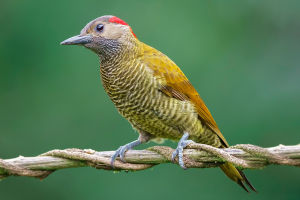Colorful Macaw Wonders
Macaws are widely distributed across the tropical rainforests of Central and South America, primarily inhabiting forests in countries such as Brazil, Colombia, and Peru.
These magnificent birds not only play a crucial role in their ecosystems but are also admired for their stunning appearance and remarkable intelligence.
1. Physical Characteristics
Macaws are among the largest birds in the parrot family. Their feathers are vividly colored, showcasing a range of hues including red, blue, green, and yellow, making them exceptionally eye-catching.
The most notable species of macaws include the Scarlet Macaw and the Blue-and-yellow Macaw. The vibrant colors of their plumage are often used to attract mates or display during the breeding season, with males typically exhibiting more intense colors than females.
2. Behavior and Habits
Macaws are renowned for their high intelligence and complex social behaviors. They possess strong learning abilities and can mimic human voices and languages.
This intellectual capacity and social skill enable them to form intricate community structures. In the wild, macaws typically live in family units and establish long-term, stable pair bonds. Their vocalizations are diverse and expressive, used for communication, marking territory, and attracting mates.
In their natural habitats, macaws primarily feed on fruits, nuts, seeds, and nectar. Their broad dietary requirements necessitate extensive habitats to meet their food sources. While foraging, macaws demonstrate considerable intelligence and skill. They use their powerful beaks to crack hard shells and skillfully maneuver through branches to find food.
3. Breeding and Conservation
The breeding behavior of macaws is equally fascinating. They generally nest in tree hollows and lay 2-3 eggs per clutch.
The incubation period lasts about 24-28 days, with both parents alternating the duties of incubation and feeding. Chicks depend entirely on their parents for care during the first few weeks after hatching, until their feathers are fully developed and they can live independently.
Many macaw populations face severe survival threats due to habitat destruction and illegal trapping. Habitat loss impacts their food sources, while the illegal pet trade has drastically reduced their numbers.
Organizations like the International Union for Conservation of Nature (IUCN) and other environmental groups are working diligently to protect macaws and their habitats through legal protection, habitat restoration, and public education efforts. These measures aim to ensure a future for these beautiful birds.
4. Human-Macaw Relations
Macaws not only play a significant role in nature but also have a close relationship with human society. Their stunning appearance and intelligent behaviors make them highly sought after in the pet market.
In conclusion, macaws are awe-inspiring birds, with their beauty, intelligence, and complex behaviors captivating people around the world. By protecting macaws and their habitats, we not only preserve biodiversity but also safeguard these precious biological treasures for future generations.


